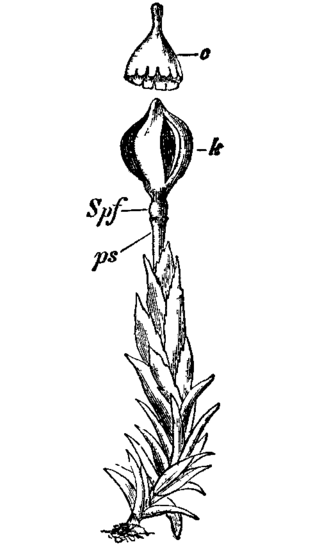
Andreaeaceae is a family of mosses which includes two genera, Andreaea, containing about 100 species, and the genus Acroschisma. The Andreaeaceae prefer rocky habitats ranging from tropical to arctic climates, on which they form tufted colonies, typically with reddish to blackish shoots. The capsules lack the peristome mechanism and dehisce longitudinally to release the spores, resulting in a paper-lantern appearance.
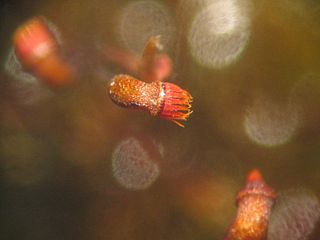
The Bryopsida constitute the largest class of mosses, containing 95% of all moss species. It consists of approximately 11,500 species, common throughout the whole world.
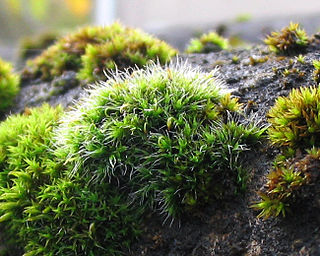
Grimmiales is an order of mosses in the subclass Dicranidae. It comprises four families: Grimmiaceae, Ptychomitriaceae, Seligeriaceae, and Saelaniaceae.

Bryales is an order of mosses.
Eustichia is the only genus of moss in family Eustichiaceae. The family was previously place in the order Dicranales, but is now placed in its own monotypic order, Eustichiales.

Leucobryaceae is a family of haplolepideous mosses (Dicranidae) in the order Dicranales.
Pseudoditrichum is a rare North American genus of haplolepideous moss (Dicranidae). It is the only known genus in its family (Pseudoditrichaceae), and there is only one species in the genus. Pseudoditrichum mirabile has been found only in a small area along the Sloan River near Great Bear Lake. This is in the Northwest Territory in northern Canada, only a few kilometers south of the Arctic Circle.

Erpodiaceae is a family of haplolepideous mosses in subfamily Dicranidae. It was formerly placed in order Dicranales, but is now placed in its own monotypic order, Erpodiales.
Rhachitheciaceae is a family of haplolepideous mosses in the subfamily Dicranidae. It was formerly placed in the order Dicranales,<ref name=Goffinet-2020-web> but is now placed in order Rhabdoweisiales along with family Rhabdoweisiaceae.

Rhabdoweisiaceae is a family of haplolepideous mosses in subfamily Dicranidae. It was previously place in the order Dicranales, but is now placed in order Rhabdoweisiales, along with family Rhachitheciaceae.

Ditrichaceae is a family of haplolepideous mosses in subclass Dicranidae. The family was previously place in order Dicranales, but it now placed in its own monotypic order, Ditrichales.

Distichium is a genus of haplolepideous mosses (Dicranidae) in the monotypic family Distichiaceae.
Timmiellaceae is a family of haplolepideous mosses (Dicranidae). It contains two genera, Luisierella and Timmiella, that were formerly place in family Pottiaceae.
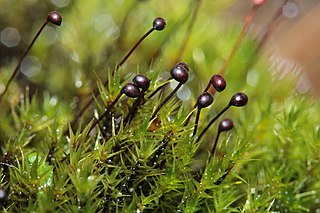
Catoscopium is a genus of haplolepidous mosses (Dicranidae) in the monotypic family Catoscopiaceae .
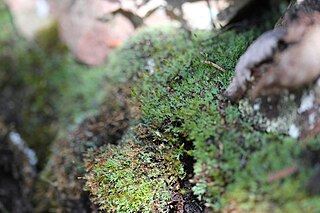
Saelania is a genus of mosses in the monotypic family Saelaniaceae in subclass Dicranidae. The genus was previously placed in family Ditrichaceae. Saelania is named after Finnish botanist Thiodolf Saelan.

Pleurophascum is a genus of haplolepideous mosses (Dicranidae) in the monotypic family Pleurophascaceae. The family was previously place in the order Pottiales, but is not place in its own monotypic order, Pleurophascales.
Serpotortella is a genus of haplolepideous mosses (Dicranidae) in the monotypic family Serpotortellaceae in the order Pottiales.
Mittenia is a genus of haplolepideous mosses (Dicranidae) with a single species, Mittenia plumula, which is the sole representative of the family Mitteniaceae. The family was previously placed in the order Pottiales, but is now placed in its own monotypic order, Mitteniales.
Amphidium is a genus of mosses belonging to the monotypic family Amphidiaceae. It has previously been placed in families Orthotrichaceae and Rhabdoweisiaceae.
Sorapilla is a genus of mosses in the monotypic family Sorapillaceae. The family was previously placed in the order Hypnales, it is now placed in its own order, Sorapillales.












